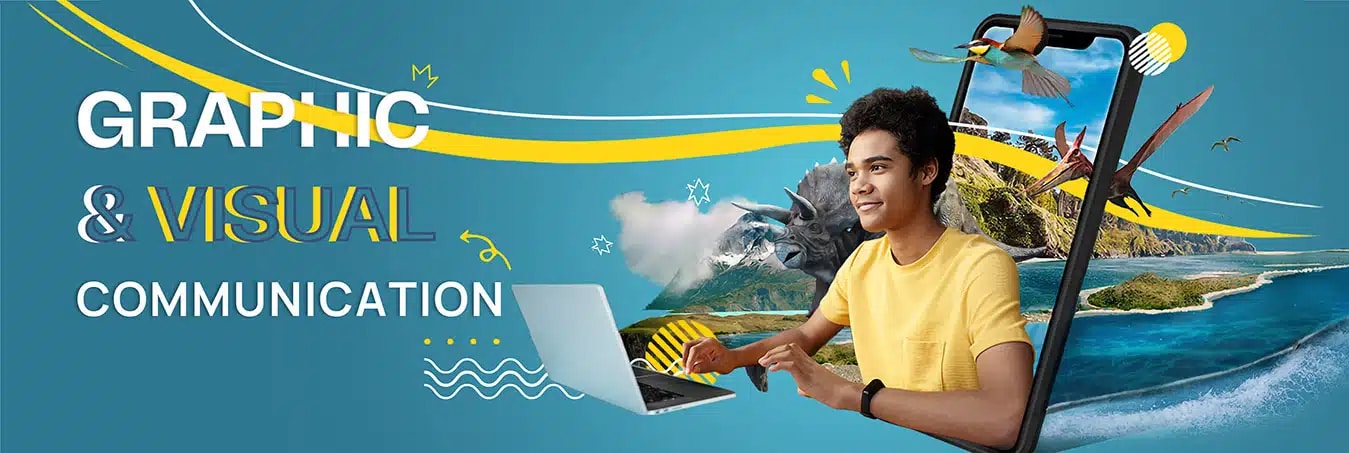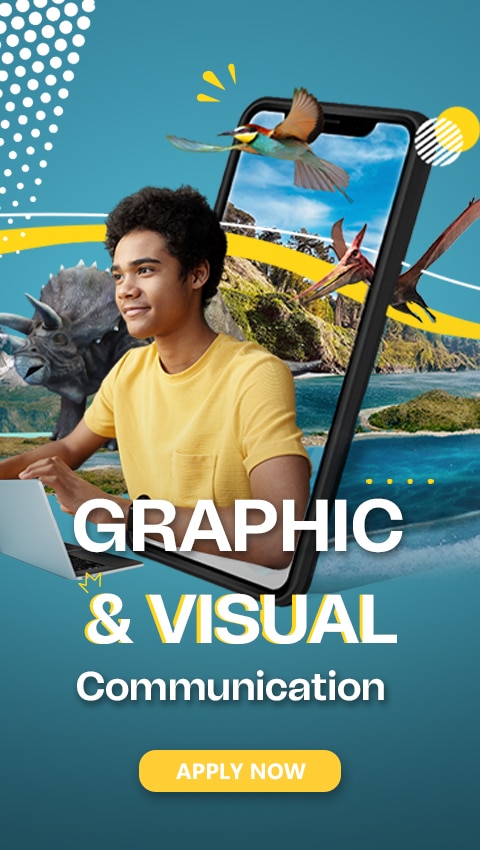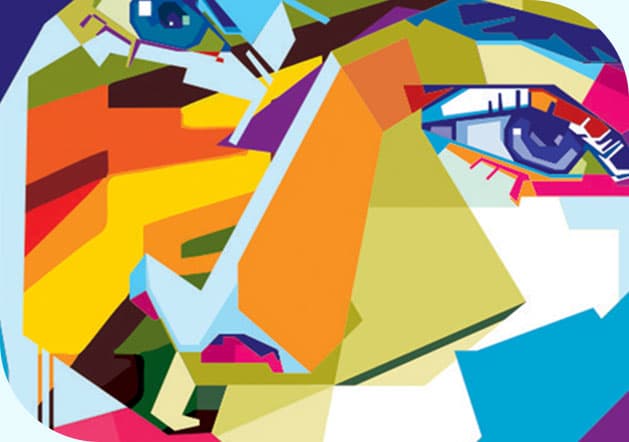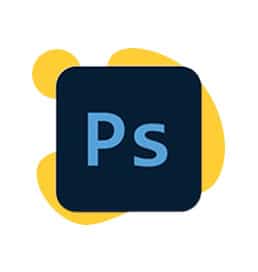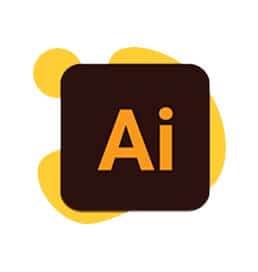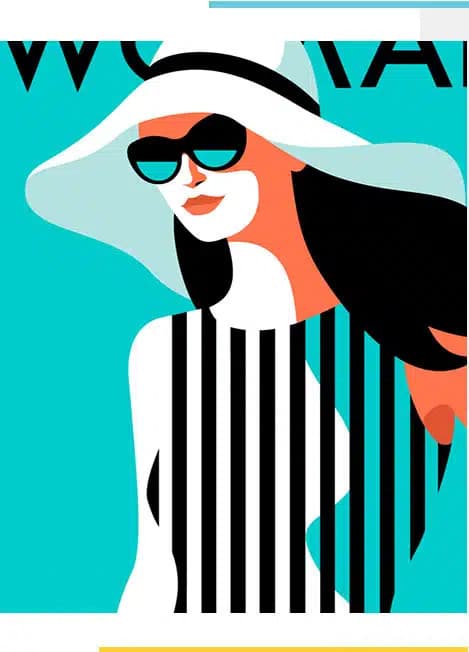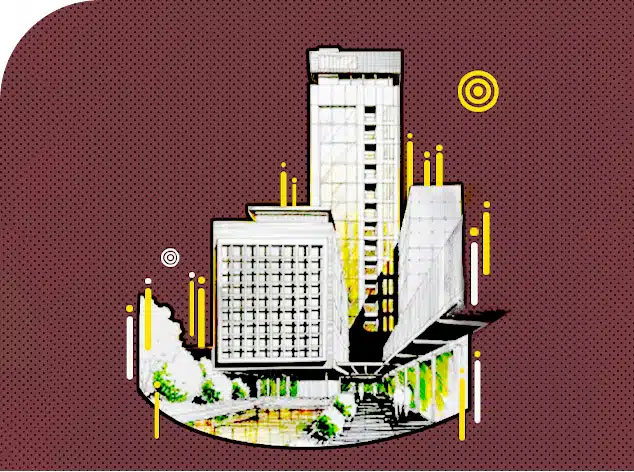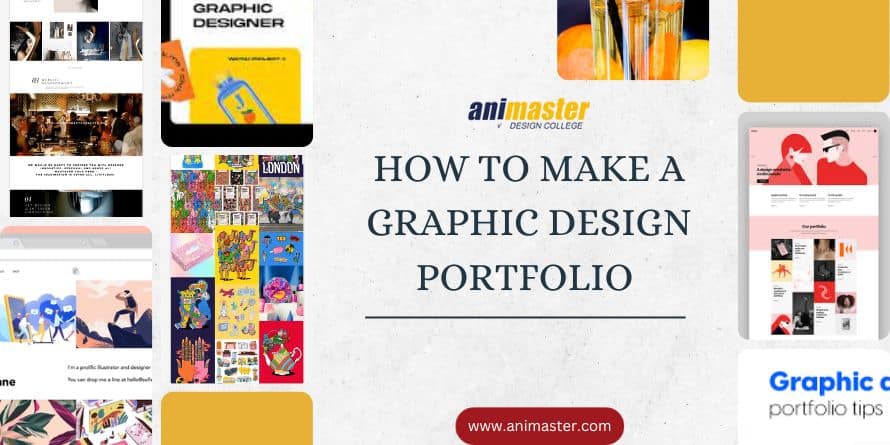Best Graphic Design Courses in Bangalore
Advanced Certificate in Graphic Design
DOWNLOAD FREE PROSPECTUS NOW !
Graphic Design CLASSES IN BANGALORE
Individual Software Certification
CAREER OPTIONS AFTER our GRAPHIC DESIGN courses IN BANGALORE
Graphic Design remains a core sector and provides a wide range of avenues across various industry segments. After completing our Graphic Design course with placement in Bangalore, you could find yourself in an advertising agency, a publishing house, a movie production company, a web design firm or even in corporate communications!
While the canvas probably begins with creating and refining the Brand Identity in our graphics course in bangalore, it extends to every Visual media that includes outdoor advertising, the digital media, television and other display media.
Learn graphic design from our expert faculty team to build confidence, approach jobs and internships with the precise skills required. Understand the trends and future scope of graphic design from them.
Animaster’s Graphic design training in Bangalore prepares you with a World Standard Portfolio. Apply confidently to the Real World Graphic Design Jobs, gain from the advantages of Graphic design to transform your future!
A Graphic Designer is a professional who’s primary responsibility is to design graphics, layouts, logos, and other visual elements that convey a message or idea to a target audience. Graphic designers who’ve taken specialized graphic design courses in Bangalore work closely with clients to understand their needs and objectives and then leverage their creative skills and technical expertise to develop designs that effectively communicate the intended message. They use a variety of software tools, such as Adobe Creative Suite, Sketch, and Canva, to create compelling visual concepts that capture the attention of the audience, a part of the training at Animaster design college. In today’s visually-driven world, a graphic design institute in Bangalore is essential for creating everything from marketing campaigns to product packaging and branding, making them very sought-after Professionals in the Industry.
A graphic concept artist’s primary responsibility is to develop original concepts that effectively communicate a message or idea to a target audience. A Graphic Concept Artist uses their artistic skills and technical expertise, often gained through graphic design training in Bangalore, to create visual assets such as illustrations, sketches, and mockups that convey the intended message. They collaborate with other professionals such as writers and web developers to bring their designs to life. They use hand drawings and various software tools, like Adobe Photoshop and Sketch, to create compelling visual concepts. Professional Graphic concept artists who graduate from top graphic design schools in Bangalore play a crucial role in creating original designs that capture the audience’s attention and leave a long-lasting impression.
A Brand Identity Designer plays a crucial role in creating a visual language for a brand that communicates its core values and distinguishes it from competitors. They work closely with clients to understand their brand’s mission, vision, and values and then use their creative and technical skills to design logos, typography, color schemes, and other visual elements that reflect the brand’s personality, a process often taught in a graphic design course with placement in Bangalore. They collaborate with the other teams in the firm to ensure consistency in the brand’s messaging across all channels. They use various software tools to develop compelling visual concepts that align with the brand’s goals. In today’s competitive marketplace, a strong brand identity is essential for success and brand identity designers who have a diploma in graphic design in Bangalore from a college like Animaster Design College are instrumental in creating that identity.
A Graphic Visualizer is a professional who specializes in creating visual designs that effectively communicate a message/idea to a target audience. Their primary responsibility is to bring ideas to life via visual representations. Graphic visualizers work closely with clients to understand their objectives and then use creative skills & technical expertise, gained through a graphic design institute in Bangalore, to develop designs that align with their vision. They create visual assets like illustrations, sketches, storyboards & mockups that effectively convey the intended message. Various software tools are used to create compelling visual designs that resonate with the audience, a skill taught at places like Animaster design college. With their ability to bring ideas to life visually, graphic visualizers who have undergone professional graphic design training in Bangalore are essential for businesses looking to communicate their message effectively.
A Graphic Illustrator is a professional artist who creates visual designs and graphics for various media outlets. They use their creativity, technical skills, and understanding of composition to produce eye-catching illustrations for print or digital platforms, a journey which often begins by searching for graphic design courses near me. Their responsibilities include understanding clients’ needs, brainstorming ideas, sketching, and producing finished artwork using digital software. The role of a graphic illustrator is crucial in creating visually compelling content that can effectively communicate messages to the intended audience. Professionals from graphic design schools in Bangalore, like Animaster Design College, play a critical role in creating brand identity and helping businesses stand out in a crowded marketplace, making them pretty much in high demand in today’s designing industry.
A Logo Designer is a professional who uses their artistic skills, creativity & understanding of branding to design logos that communicate the essence of a brand in a visually appealing way. They work in various industries, including advertising, marketing & design, and collaborate with clients to understand their needs and create designs that reflect their brand values, a skill often honed by taking a graphic design course with placement in Bangalore. Logo designers play a crucial role in creating a brand’s identity and helping businesses stand out in a competitive marketplace. Their designs are often the first point of contact for potential customers and can make a lasting impression on them. A good logo designer who has a diploma in graphic design in Bangalore from a college like Animaster Design College must have a strong understanding of design principles, branding, and marketing to make a mark in the industry.
GRAPHIC DESIGN TRAINING – COURSE CONTENTS
Drawing Fundamentals | Introduction to interface of Photoshop | Selection Tools and techniques | Undo Options, History Palette, Guides, Rulers | Color Theory | Image Adjustments | Painting in Photoshop | Doctoring Images | Raster v/s Vector | Vector Shapes | Smart Objects | Adjustment Layers | Filters | Masking
Understanding design with Illustrator | Getting to know the work area | Selecting and aligning | Creating and Editing Shapes | Transforming Objects | Drawing with Pen and Pencil | Working with Type | Working with Layers | Perspective drawing, Blends and Gradient | Working with Brushes | Applying effects | Appearance attributes and graphic styles | Working with Symbols | Integration
Understanding the interface | Working with documents | Document and pages | Working with Documents | Working with Objects | Text and threading | Editing text | Working with typography | Importing and modifying Graphics | Tables | Transparency | Printing and Exporting | Creating PDF files with form fields | Creating a fixed layout EPUB
Why Vectors? | Working with documents | Diving into CorelDraw | Working with Documents | Creating Basic Shapes and applying transformations | Arranging and organizing objects | Understanding the Right path tools | Exploring Special shapes. connectors | Editing Objects and Rearranging paths | Working with Text | Options of Filling Objects | Strokes and Path | The perspective and Extrude Effects | Using envelope tool, Lens effect and Bevels | Shape Editing and distortions | Transparencies and Shadows | Bitmaps and Photos | Professional Outputs and exporting
Portfolio | Project Development
Test | Evaluation | Certification
Student Testimonials

The graphic design courses in Bangalore at Animaster is one of the best. The design faculty here are exceptionally good and every Graphic Design classes in Bangalore at Animaster is very enriching. The Graphics course in Bangalore is very well structured, and the syllabus is updated as per industry standards. From the design certification course, I got to learn right from the basics to advanced levels. The instructors are friendly, clear and patient, answering all queries. They even give the class additional resources for inspiration and tips. I took a lot of time to search for the best graphic design courses in Bangalore on the internet and narrowed it down on this one. Though being far from my home, I chose Animaster, and travelled extra since I felt it was a good investment for my career. Also, the graphic design fees are affordable and payable in easy installments. I am very glad I took the decision to learn graphic design in Bangalore at Animaster. This Graphic Design course with placement in Bangalore is one among the several job-oriented design courses to choose from and I would recommend Animaster Design school to any student who wants to make a successful career in graphic design.
RAVI NARAYANAN
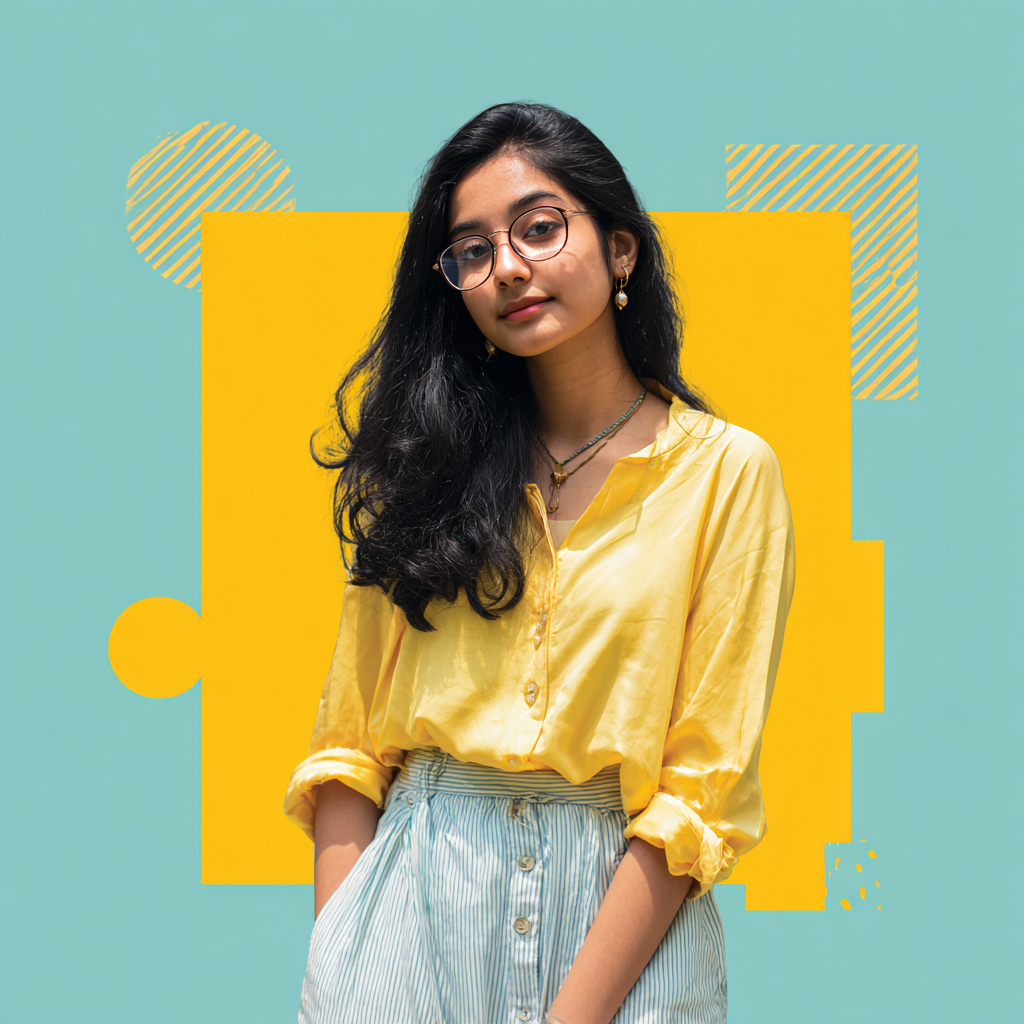
I was looking for the Graphic Design Schools in Bangalore, to get a job as a designer in this fast-growing industry. I found Animaster at Bangalore to be the most reliable graphic design institute in Bangalore. The environment here is very artistic, friendly and lots of fun as you learn. The Certificate in Graphic Design course at Animaster is very well structured and has affordable fees with easy instalment options too. The design faculty here are exceptionally good, with seniors constantly being helpful and mentoring us. The graphics course in Bangalore is very well structured and the syllabus is updated to match design industry standards. The design certification course was very informative and I got to learn graphic design right from the basics to advanced in the graphic design class. The instructors are friendly, helpful, very patient and answer all queries painstakingly. They even give the class additional resources for inspiration and tips. Animaster offers several job-oriented design courses to choose from. Finally, I got placed at a leading multinational house as a junior designer at a comfortable salary. I would recommend Animaster Design school very highly.
NISHA PATEL

One of the Best Institute for Certificate in Graphic design course. Yes, Animaster rocks in terms of Teaching Facilities. Faculty are very good and experienced. I would like to conclude my experience here to be simply superb, inspiring and very creative. It is the best place to learn graphic design if you are eagerly looking forward to making the best career in the Industry. It provides the best facilities ranging from Hi-end lab and other hardware/ software resources. Overall, an amazing place to learn, grow and build our career. The College Infrastructure is good. The facilities which are provided for the students are very beautiful, mainly the security measures are wonderful. Apart from this the labs in this Graphic Design Institute are very good. The faculty here are highly experienced, from the industry, and qualified. They are also friendly and are always ready to clear the doubts of the students in the graphic design class. Also, they share their experiences in this industry, which helps us a lot to get a job in this industry and perform well in this graphics course in Bangalore . Thank you Animaster, I am a very satisfied student of this Design School.
CHANDANA SV
PLACEMENT RECRUITERS
Animasterians are a favorite among recruiters of leading Corporates, Studios & design houses
FAQ – GRAPHIC DESIGN COURSE QUERIES
How would you define graphic design?
Graphic design is the art and practice of creating visual content to communicate messages. It blends creativity, typography, imagery, colors, and layouts to convey ideas effectively, whether for branding, advertising, digital media, or print. In short, it’s visual communication with purpose. To know more, join our Graphic design courses in Bangalore today.
What is in the Graphic Design course?
While you learn Graphic design, the course covers a range of skills and techniques used in the creation of visual content for various mediums. In the graphic design class, students will learn about design history, theory and principles, branding and identity design, digital illustration, print design, motion graphics, photography and image edition, color theory, typography, digital tools such as Adobe Creative Suite and Portfolio development cum presentation skills. In the graphic design class, you will also develop skills in visual communication, layout design, and problem-solving. You can gain valuable knowledge and hands-on experience that will help you learn graphic design in a structured and supportive environment. Whether you’re a beginner or looking to take your skills to the next level, our graphics course in bangalore can provide you with the foundation and tools you need to succeed in this creative and dynamic field.
Name the major scopes of graphic design?
1. Visual Identity Design – Creating brand logos, color schemes, typography, and style guides to establish a brand’s personality.
2. Marketing & Advertising Design – Designing ads, social media creatives, brochures, posters, and banners to promote products or services.
3. User Interface (UI) Design – Designing interactive elements like buttons, menus, and layouts for websites, apps, and digital platforms.
4. Publication Design – Creating layouts for books, magazines, newspapers, and digital publications.
5. Packaging Design – Designing product packaging that’s visually appealing and functional, while reflecting brand identity.
6. Motion Graphics Design – Designing animated visuals, explainer videos, and moving elements for ads, films, and social media.
7. Environmental Design – Designing physical spaces like signage, exhibition displays, and event graphics.
8. Art & Illustration for Graphic Design – Creating custom illustrations, icons, infographics, and other visual artwork to support design projects.
Join our Graphic design classes in Bangalore to know more.
What are the 3C’s of Graphic Design?
The 3 C’s of graphic design are:
i) Creativity – Bringing unique ideas, concepts, and visuals that stand out and connect with the audience.
ii) Consistency – Maintaining a uniform style, color palette, and design elements across all materials to strengthen brand identity.
iii) Clarity – Ensuring the design communicates the message quickly and effectively without confusion.
These 3 C’s are like the backbone of every successful design—without them, even the most beautiful artwork can fail to make an impact. Join our Graphic design classes in Bangalore to know more.
What to expect in a graphic design course?
While you learn graphic design, you can expect a powerful blend of creativity, tools, and industry exposure. Here’s what you’ll typically get:
🎨 Design Fundamentals: Color theory, typography, composition, layout, and branding principles
🖥️ Software Training: Mastery of Adobe Photoshop, Illustrator, InDesign & more
🧠 Concept Development: Visual storytelling, ideation, and client-focused design thinking
📁 Portfolio Creation: Regular assignments, real-world projects, and guided portfolio building
🗣️ Feedback & Mentoring: Personalized reviews, expert faculty guidance, and peer critiques
💼 Career Exposure: Insights into freelancing, internships, job roles, and design trends
What are the different types of courses in graphic design?
The 7 major types of Graphic Design are:
1. Branding and Identity Design-creating a visual identity for company through logos, typography and design elements
2. Advertising and Marketing Design-creating advertising visuals and marketing campaigns, like posters, brochures, and social media graphics
3. Packaging Design– designing the visual packaging for products, like labels, boxes and bags
4. Publication Design– design for newspapers, journals, magazines and periodicals
5. User Interface– UI- design of the interface of digital products, like mobile apps, websites and softwares
6. Environmental design-Designing visual spaces for museums, retail stores and public spaces
7. Motion Graphics Design– Animated and Visual effects for Film, TV and different media.
Students will study all of the above streams as part of their Graphic Design courses in Bangalore at Animaster. Join a Graphics course in Bangalore at Animaster and be a Pro!
Which is the best graphic design course near me?
There are many graphics courses in Bangalore being offered, but the best course to choose to learn Graphic Design, depends on your individual needs, learning style, time and budget. Animaster’s Certificate courses are for 6m /1 year, and focus on specific design topics like logo design, packaging design or print design, along with a Design Portfolio, which put together are the benefits of graphic design.
Our Graphic Design courses in Bangalore are highly skilled and job-oriented. These programs can be done Online too. Animaster’s Diploma in graphic design is offered as a 1/2 year course that covers all aspects of Graphic Design classes in Bangalore and enables stable careers. Our Bachelor degree in Graphic Design is a 3 to 4 Year professional degree that offers comprehensive education and a strong foundation.
Consider your needs and talk to our Academic Counsellor before making the right decision for a successful career in this field and becoming a good graphic designer. Looking for the best Graphic Design Course near me? Animaster Design College is centrally located in Hebbal, Bangalore, with proximity to the central bus stand, Railway station, Airport and metro station, making it easily accessible via bus, train, and metro, thus making our graphic design courses accessible near you.
What are the components of Graphic Design?
The key components of graphic design are:
a. Color – Sets mood, evokes emotions, and builds brand identity.
b. Typography – The style, size, and arrangement of text for readability and impact.
c. Imagery – Photos, illustrations, icons, and graphics that enhance communication.
d. Layout/Composition – How elements are arranged to create balance and flow.
e. Lines & Shapes – Used to guide the eye, organize design, and create structure.
f. Texture – Adds depth and a sense of realism or feel to a design.
g. Space (White Space) – Ensures clarity, focus, and breathing room for elements.
Together, these components help designers create effective, visually appealing communication. To know more, join our Graphic design classes in Bangalore today.
What are the 4 types of graphic design?
The 4 types of graphic design are:
1. Corporate Design– this type of design involves creating a visual identity for a company with the use of logos, typography, colour schemes, and other design elements. The designers objective is to create a recognizable visual representation of the brand.
2. UI Design– used to design the interface of digital products like mobile apps, websites, and softwares. The Designers goal is to create user friendly and intuitive interface for digital products, such as websites, apps and software.
3. Advertising Design– this style of design involves creating visual materials needed in advertising and marketing campaigns. The designers goal is to promote a product or service to promote sales with the use of innovatively designed posters, brochures, flyers, and social media content
4. Publication Graphic Design– This type of design involves designing magazines, journals, newspapers, books and other printed content.
The designers goal is to create an engaging and visually appealing layout that enhances reading experience. Join for the best Graphic Design courses in Bangalore at Animaster, Bangalore for expertise on the different types of Design.
What are the 4 pillars of graphic design?
The 4 pillars of graphic design are:
a) Typography – Choosing and arranging fonts to make text visually appealing and readable.
b) Color Theory – Using colors strategically to evoke emotions, create harmony, and guide attention.
c) Layout & Composition – Organizing elements so the design flows naturally and communicates effectively.
d) Imagery & Visual Elements – Using photos, illustrations, icons, and textures to enhance the message and aesthetics.
Together, these pillars form the foundation for creating designs that are both visually striking and functionally effective. To know more, join our Graphic design courses in Bangalore today.
What is the golden rule of graphic design?
The golden rule of graphic design is often linked to the Golden Ratio (approximately 1.618), a mathematical proportion that creates visually balanced and harmonious designs.
Designers use it to guide:
a) Layout proportions for balance and flow
b) Placement of key elements so the eye moves naturally
c) Scaling of typography and imagery for pleasing hierarchy
In short, it’s about creating visual harmony that feels natural and appealing to the viewer. Join our Graphic design courses in Bangalore to know more.
What is the duration of a graphic design course?
The duration of a graphic design course can vary depending on the level and type of program. The certificate or diploma program in graphic design may take anywhere from 6 months to 1 year to complete. The bachelor’s degree in graphic design can take 3 to 4 years to finish. The duration of our programs can vary widely, from a few hours to several months.
When considering to learn Graphic Design and its duration, it’s important to choose the program that fits your schedule and learning needs. Some graphics courses in Bangalore are offered full-time, while others are part-time. The length of the graphic design class may also depend on the intensity and depth of the curriculum. To get a better idea of the duration of a graphics course, it’s best to research the specific programs on our website and contact our Academic Counsellor for guidance.
You can also consider our online graphic design courses in Bangalore, which may offer greater flexibility in terms of scheduling and duration. Overall, the duration of Animaster’s graphic design classes in Bangalore will depend on a variety of factors, including the level of the program, the curriculum, and your individual learning pace.
What are the Short term | Part time Graphic Design Courses in Bangalore?
There are various short-term and part-time graphic design courses in Bangalore being offered by leading Design Schools in Bangalore. These courses are designed to help individuals learn graphic design skills, enhance their creativity, create industry-required work portfolios, so that you can apply for jobs confidently. Some popular options include certificate courses in graphic design, diploma courses in graphic design, and advanced certification in Graphic Design. If you’re looking to learn graphic design, you can consider short-term graphic design classes in Bangalore, offered by reputable institutions such as Animaster Design College, Bangalore or National Institute of Design. These part-time graphics courses in Bangalore are offered with Certification and cover various aspects of graphic design, you make you Job ready. Additionally, you can also explore online courses that offer flexible learning options and allow you to learn graphic design at your own pace.
What are the fees for Graphic Design courses?
The fees for graphic design classes in Bangalore can vary depending on the type of course and the institute. Short-term certificate courses offered by government institutes usually cost between ₹5,000 to ₹20,000, while private institutes may charge anywhere between ₹30,000 to ₹1,00,000 for similar programs.
At Animaster Design College, Bangalore, the fees for our Graphics course in Bangalore are highly affordable, ranging from ₹4,200 to ₹50,000, depending on the duration and level of the program. This makes it an excellent choice for students seeking professional training at competitive prices.
For those looking at degree-level education, such as BVA or B.Des programs, fees can go higher, often ranging between ₹2,00,000 to ₹8,00,000 for the entire program. Specialized higher diplomas at some design schools may also cost over ₹1,00,000.
In short, while Bangalore offers a wide spectrum of pricing for graphic design education, Animaster Design College stands out by providing quality training at a value-driven fee range of ₹42,000 to ₹50,000, making it one of the most accessible and reputed choices for aspiring designers.

FAQ – GRAPHIC DESIGN AS A CAREER
Is learning graphic design a good career choice?
Yes, Graphic Design careers are one of the most sought-after choices today. Designers are in high demand, responsible for creating visual concepts, using graphic software, to communicate ideas or creating advertisements that inspire, inform and captivate consumers in almost all industries today.
From logos to ads, brochures to manuals, motion graphics to digital marketing, UI/UX jobs, the requirement is endless.
As digital consumption increases, Companies are investing more in their design, branding, websites, UI, marketing and digital footprint to attract customers. The scope of graphic design is increasing rapidly.
In this growing demand, freelancers and homemakers today, are also building small graphic businesses by servicing clients from their homes. It is essential to learn graphic design skills and industry relevant softwares to build a very good design portfolio to showcase, impress and claim jobs or projects. If you have a passion to Learn Graphic Design in Bangalore and are willing to work towards enhancing your skills and portfolio, join Animaster’s Graphic Design courses in Bangalore, for a financially rewarding career.
Can I learn Graphic design in one month?
To Learn graphic design in just one month is possible, but it is important to manage your expectations and also practice the entire day. Graphic design is a vast field that involves various elements such as typography, color theory, composition, software applications, and more. It takes time and practice to master these skills. While it is possible to learn some basic concepts and techniques in the graphic design class in a month, it is unlikely that you will be able to master the entire field. However, you can still make significant progress and gain a solid foundation to build upon. To learn graphic design in one month, you can start by selecting a specific area of graphic design that you want to focus on. For example, if you’re interested in logo design, you can start by learning the basics of typography, color theory, and composition. Next, you can practice using software applications such as Adobe Illustrator or Adobe Photoshop to create your designs. Finally, it’s important to continue practicing and refining your skills after the initial month of learning. This will help you improve and develop your design skills over time. Animaster is one of the best graphic design institutes in Bangalore that offers fast-track courses. Contact our Academic Counsellor to learn about our wide range of Graphic Design Courses in Bangalore.
Who is best suited for a career in graphic design?
People who are creative, detail-oriented, have a strong sense of aesthetics, and enjoy working with visual elements are best suited for a career in graphic design. Graphic Design statistics also show that there are more women in this field. Additionally, having strong communication skills and being able to work well under deadlines are also important traits for a successful graphic designer.
What is the difference between a full-time and freelance graphic design career?
A full-time career after Graphic Design Classes in Bangalore offers stability, fixed income, and long-term growth within companies or agencies, while a freelance career gives flexibility, creative freedom, and the chance to work with multiple clients. Both paths can be equally rewarding depending on your goals and lifestyle.
What will be the impact of AI on graphic design?
When you learn graphic design, you gain both theoretical and practical knowledge that AI can never replace. Concepts like color theory, typography, visual hierarchy, and branding psychology demand human intuition and cultural awareness, while practical approaches such as concept development, storytelling, emotional connection, and portfolio building rely on originality and lived experiences. AI may assist, but creativity, strategy, and individuality remain uniquely human—making Graphic Design Courses in Bangalore the best way to develop these irreplaceable skills.
What emerging design specializations should aspiring designers focus on to stay competitive?
Graphic Design is already a high-demand creative field that ensures excellent career opportunities and rewarding jobs across industries. With strong Graphic Design skills, you can secure good positions and grow steadily. However, for faster growth, higher salary, and leadership roles, learners from a Graphics Course in Bangalore or advanced Graphic Design Classes in Bangalore can also skill up in areas like UI/UX Design, Motion Graphics, AR/VR Design, Digital Product Design, and Creative Branding Strategy. While Graphic Design alone is enough to build a solid career, exploring these specializations guarantees even greater success.
What software should a graphic designer learn?
When you learn graphic design, mastering the right software is essential for building strong creative skills. Every graphic designer should learn Adobe Photoshop for image editing, Adobe Illustrator for vector graphics and logos, Adobe InDesign for layouts and publishing, and CorelDRAW for versatile design work. These tools form the foundation of professional design and give you the expertise to create impactful visuals across industries.
What is the highest paying job in graphic design?
The highest paying job in graphic design is typically a creative director, Graphic design Head or art director role. Creative directors /Heads are responsible for overseeing the design and branding of an entire organization, while art directors focus on the visual aspects of specific projects. These roles involve leading design teams and overseeing the visual branding of an organization, drawing salaries in the range 1 lakh -1.5 lakhs p.m. To be successful in Graphic Design, enroll, in our graphic design classes in Bangalore, learn graphic design from industry experts, develop your knowledge and design skills, develop a portfolio of work that showcases your abilities, stand out in the competitive job market, and increase your earning potential. Soon after completion of your course, the placement team at Animaster, will assist you immediately with a job in an MNC, design house or Ad agency. Starting pay scale can range from INR 15,000 to INR 25000 p.m., based on your skill sets and Portfolio. You will gain experience working in a live environment and climb up the ladder. Senior designers in the industry draw salaries ranging from INR 50,000 to INR 75000 p.m.
Graphic design course with placement in Bangalore?
There are several graphic design courses in Bangalore that offer placement opportunities to their students. Animaster is the market leader and offers the best graphics course with placement in Bangalore. Animaster has a very strong industry network, which includes tie-ups with leading design studios and companies. This helps their students gain access to job opportunities in reputed organizations. Animaster’s placement cell works closely with these companies to understand their hiring needs and to match them with the right candidates. Additionally, as students learn Graphic Design with Animaster. It provides students with hands-on training and practical experience in its graphic design class, through live projects and internships. This gives students exposure to the real-world challenges faced by professionals in the industry. Animaster also has a strong portfolio development program, which helps students showcase their work to potential employers, participate in design competitions and exhibitions. Animaster’s strong industry network, practical training and portfolio development program, make it one of the best graphic design institutes in Bangalore with guaranteed placement opportunities.
What are the job opportunities after completion?
After completing Graphic Design Courses in Bangalore, students can explore exciting job roles such as Junior Graphic Designer, Motion Graphic Designer, Web Designer, or Digital Illustrator. With experience, opportunities open up in UI/UX design, brand identity design, and creative direction across industries like advertising, e-commerce, tech, publishing, and media. So, these roles offer not just growth but also creative satisfaction and rewarding career paths after you thoroughly learn graphic design.
What are the career progression paths in graphic design?
After completing a Graphics Course in Bangalore, career progression usually starts as a Junior Designer, moving to Graphic Designer, then to Senior Designer. With experience, you can grow into roles like Art Director, Creative Director, or UI/UX Specialist, or even build your own design studio for independent projects and entrepreneurship.
UI/UX vs. graphic design: career growth, salary, and transition?
Completing Graphic Design Courses in Bangalore gives you a strong foundation for creative careers, with roles like Graphic Designer, Brand Designer, or Motion Graphic Artist offering steady growth and good salaries. However, the long-term career and salary prospects of a UI/UX Designer are often higher, as the demand for user-friendly digital products, apps, and websites continues to grow globally.
The transition from Graphic Design to UI/UX typically involves building on your existing visual design skills, then adding expertise in user research, wireframing, prototyping, and usability testing. When you learn graphic design, you already gain strengths in typography, color, and layout—which are directly valuable in UI/UX. By adding digital tools like Figma, Adobe XD, and Sketch, along with a focus on user-centered design thinking, you can smoothly shift into UI/UX and unlock faster career growth with higher salary packages.

FAQ – GRAPHIC DESIGN COURSE portfolio
What is a portfolio in graphic design?
A portfolio in graphic design is a curated collection of a designer’s best works, showcasing skills in typography, color, layout, branding, digital art, and more. It demonstrates creativity, technical expertise, and problem-solving ability, making it vital for jobs and freelance projects.
At Animaster Design College, students of our Graphic Design courses in Bangalore are guided to build their portfolios. With faculty mentorship, tasks, and projects, we ensure every learner graduates with a professional, industry-ready portfolio that strengthens their career prospects.
What is a simple portfolio?
A simple portfolio is a neatly organized collection of your best design works that highlights your creativity, skills, and style without being overloaded. It usually includes selected projects, short descriptions, and clear visuals to showcase your capabilities.
If you join a Graphics course in Bangalore at Animaster Design College, you will be guided to build a simple yet professional portfolio that effectively represents your talent and makes you stand out in the industry.
Where can I create my graphic design portfolio?
You can create your graphic design portfolio through online platforms like Behance, Dribbble, or Adobe Portfolio, as well as by designing your own website for a personalized showcase. Offline, you can also build a printed portfolio for interviews and presentations.
At Animaster Design College, Bangalore, we guide students in developing both online and offline portfolios as part of our Graphic design courses in Bangalore, ensuring they learn graphic design and graduate with industry-ready profiles to showcase their creativity and skills.
How does a portfolio look like?
A portfolio in graphic design usually looks like a curated collection of your best creative works, presented either in a digital format (website, PDF, Behance, Dribbble) or as a printed file. It includes projects such as logos, posters, branding, digital illustrations, and case studies with clear visuals and short explanations.
If you join a Graphics course in Bangalore at Animaster Design College, you’ll be guided to create both online and offline portfolios, showcasing your skills in a professional and visually appealing way that attracts employers and clients.
What is the best portfolio for beginners?
The best portfolio for beginners is a simple, well-organized collection of your strongest creative works that clearly show your skills in design, color, layout, and software usage. It doesn’t need to be vast—just 5–8 quality projects are enough to make an impact.
If you are pursuing graphic design courses in Bangalore, especially at Animaster Design College, you’ll get constant guidance to build your portfolio step by step. Every assignment and project you complete is refined under faculty support and added to your portfolio, ensuring it looks professional and industry-ready even as a beginner.
How do I build my first portfolio?
To build your first portfolio, start by collecting your best design works from class projects, personal experiments, or freelance tasks. Arrange them in a clean, organized format that highlights both your creativity and technical skills. Include short descriptions for each project to explain your design thought process.
If you join a Graphics Course in Bangalore at Animaster Design College, you’ll receive expert guidance, regular assignments, and portfolio reviews. This ensures your portfolio grows step by step, making it professional and industry-ready from the very beginning.
Are Portfolio and Resume the same?
No, a portfolio and a resume are not the same. A resume lists your qualifications, experience, and skills, while a portfolio visually showcases your design work, creativity, and problem-solving ability.
At Animaster Design College, Bangalore, students of our Graphic Design classes in Bangalore get constant guidance to create a strong professional portfolio along with their resume while they learn graphic design. This ensures they graduate with both – a document that validates their achievements and a portfolio that demonstrates their real design capabilities to employers.
Can I use my CV as a portfolio?
A CV and a portfolio serve different purposes—your CV lists qualifications, experience, and achievements, while a portfolio visually showcases your design skills and creativity. You cannot use a CV as a replacement for a portfolio, but both complement each other.
When you learn graphic design by enrolling in our Graphics Course in Bangalore at Animaster Design College, you’ll develop a professional portfolio alongside your CV, ensuring you’re fully prepared to impress employers and clients.
How to create a portfolio?
To create a portfolio, start by selecting your best design works that reflect creativity, technical skills, and versatility. Organize projects into categories like logos, posters, branding, or digital art, and add short descriptions highlighting your role, tools used, and design approach. Keep the layout clean, professional, and easy to navigate, whether online or offline.
At Animaster Design College, Bangalore, our Graphic Design classes in Bangalore include continuous portfolio development, where every assignment and project is refined under expert guidance to build a strong, job-ready portfolio.
How do I start my portfolio?
To start your portfolio, begin by collecting your best creative works—logos, posters, branding, digital art, and class assignments. Organize them neatly, add short descriptions, and showcase the thought process behind each project. Focus on quality over quantity to make a strong impression.
At Animaster Design College, our Graphic Design courses in Bangalore guide you step by step in building a professional portfolio, ensuring it highlights your creativity, technical skills, and readiness for industry opportunities.
What is a good portfolio?
A good portfolio is one that showcases your best and most relevant work, highlighting creativity, technical skills, and problem-solving ability. It should be well-structured, visually appealing, and easy to navigate, with each project telling a clear story of your design process and final outcome.
If you are taking Graphic Design classes in Bangalore at Animaster Design College, you will be guided to create a strong portfolio that not only reflects your skills but also aligns with industry expectations, giving you a competitive edge in your career. So, join our course and learn graphic design today.
How do I introduce myself in my portfolio?
When introducing yourself in your portfolio, keep it short, clear, and professional. Start with your name, your role as an aspiring or professional graphic designer, and mention your skills, strengths, and creative style. Share what inspires your designs and the kind of projects you enjoy working on.
If you have taken Graphic Design Courses in Bangalore at Animaster Design College, you can also highlight the training, software expertise, and portfolio-building support you received. This adds credibility and makes your introduction stronger and more industry-focused.

FAQ – GRAPHIC DESIGN COURSE FEES
How much does it cost to pursue a graphic design course?
The fees for graphic design courses in Bangalore vary depending on the institute, duration, and level of the course. Typically, graphics courses in Bangalore range from INR 10,000 per module to INR 1,00,000 for the complete program. These courses range from short-term certification programs to long-term diploma and degree courses. In conclusion, if you want to pursue a career and learn graphic design in Bangalore professionally, ensure to pick the right Graphic Design institute in Bangalore that offers affordable, yet industry-recognized and comprehensive graphics courses. By choosing a reputable Graphic Design School in Bangalore like Animaster, you will get access to a comprehensive curriculum, experienced faculty, state-of-the-art facilities, and a Certificate in graphic design that is recognized by most in the Design industry. What’s more, our Graphics Course is affordable and can also be paid in easy installments. Talk to our Academic Counselors for the right guidance on the appropriate course for you to take up and structure your fees in accordance.
What is Animaster’s “Affordable +” Graphic Design Course Fee?
Our graphic design courses in Bangalore at Animaster is one of the most affordable in the industry. Learn graphic design and invest in your future career. Our classes at Animaster are priced to make that learning accessible to everyone. Our graphics course is designed to give you the skills you need to succeed in the industry, and our affordable fees mean that you can start building your career without any pressure. As a parent, you want your child to have the best opportunities for their future, and investing in your child’s education is a big decision. Animaster offers just that – an affordable investment in their education that can lead to a fulfilling and rewarding career. Stay assured that your investment is worth it. Graphic design is an in-demand field that offers countless opportunities for growth and advancement and the graphic design course fees vary. By enrolling your child in our Graphic Design classes in Bangalore at Animaster, you’re giving them the tools they need to succeed and setting them up for a bright future. Don’t let the cost of education hold your child back from pursuing their dreams. Help them gain from the benefits of studying Graphic Design. The graphics course in Bangalore at Animaster, is priced to make quality education accessible to everyone, regardless of their financial situation.
Are installments allowed for paying the Graphic Design Course fees?
Yes, at Animaster Design College you can enroll in a Graphics Course in Bangalore with complete ease, as we offer easy and flexible installments for fee payment. This ensures that your journey to learn graphic design is smooth and stress-free while you focus on building your creative career.
Is graphic designing course costly | expensive?
The cost of a graphic designing course can vary depending on factors such as the duration, level and reputation of the institute. It is important to consider the long-term benefits of investing in a quality course. The Graphics course at Animaster, can equip you with the necessary skills and knowledge to pursue a rewarding career in this field, to open up better career prospects. Typically, graphic design courses in Bangalore can range from INR 10,000 to INR 1,00,000. The fees for a course can be a significant investment, but it is important to make sure that you are paying for the expertise of experienced trainers, the latest software, and access to the best facilities. In addition, a qualitative graphic design course at Animaster, can provide you with hands-on training and exposure to real-world design projects that can help you build your portfolio and showcase your skills to potential employers. Our Graphic Design Courses in Bangalore is well designed to help you acquire the knowledge and skills needed to design effectively, which can provide you with a competitive edge in the job market and a better chance to secure a high-paying job in the industry.
Does the Graphic Design fee include study materials and software?
The Graphics Course in Bangalore at Animaster Design College includes both study materials and software within the course fees of ₹42,000 – ₹50,000. This ensures students have all necessary tools without extra charges.
Are there opportunities for internships or job placements?
Yes, graphic design classes in Bangalore at Animaster Design College come with strong internship and placement support. Our dedicated placement cell collaborates with top companies, matches student profiles with the right opportunities, and ensures you gain real-world experience while building a successful career in design.

FAQ – graphic Design Course Certificate
What is a certificate in graphic design?
A certificate in graphic design is a formal recognition that proves you have gained the essential skills and knowledge to work as a designer. It covers fundamentals like typography, color theory, layout, and software such as Photoshop, Illustrator, and InDesign.
By joining Graphic Design Classes in Bangalore at Animaster Design College, you not only earn a certificate but also learn graphic design by building a professional portfolio under expert faculty guidance, making you industry-ready with both proof of learning and practical skills.
Which certification is best for graphic design?
The best certification for graphic design is one that combines industry-recognized software skills like Adobe Photoshop, Illustrator, and InDesign with strong creative foundations. By enrolling in Graphic Design Courses in Bangalore at Animaster Design College, you not only gain certified training but also learn graphic design by building a professional portfolio that makes you stand out in the industry.
How much is a graphic design certificate?
The cost of a graphics course in Bangalore varies widely—from ₹5,000 in government institutes to ₹1,00,000 in private ones. At Animaster Design College, you can learn graphic design through a 6-month advanced certificate program at just ₹42,000 to ₹50,000, combining expert faculty guidance with professional portfolio building.
Is it worth getting a graphic design certificate?
Yes, getting a graphic design certificate is absolutely worth it. Here’s why:
✅ Structured Learning: You gain industry-relevant skills in software like Photoshop, Illustrator, and InDesign.
✅ Career Boost: It makes your resume stand out for roles like visual designer, UI artist, and brand identity designer.
✅ Portfolio Development: You build a strong portfolio under expert guidance.
✅ Freelance & Remote Work Ready: The certificate builds credibility with clients.
✅ Faster Pathway: Perfect if you want to enter the creative industry quickly without committing to a full degree.
Join our Graphic Design Courses in Bangalore and learn Graphic Design with a Certificate from Animaster Design College, Bangalore, and get certified.
Do you need certification to be a graphic designer?
You don’t always need a certification to be a graphic designer, but having one adds strong credibility to your skills and boosts career opportunities. Enrolling in Graphic Design Classes in Bangalore at Animaster Design College ensures you learn graphic design, earn a recognized certificate along with a professional portfolio, giving you a competitive edge in the design industry.
What is the duration of a Graphic Design Certificate Course?
Most graphic design courses in Bangalore take 6 months to 1 year, but at Animaster Design College, our 6-month certificate program is power-packed—equipping you with professional skills, hands-on projects, and a portfolio that makes you industry-ready in record time.

FAQ – graphic Design industry trends
What is the latest trend in Graphic Design?
Here are the latest graphic design trends:
> AI-powered creativity – Designers use AI tools to create smarter, faster, and more innovative visuals.
> 3D design – Adds depth and realism, making designs more engaging.
> Bold typography – Eye-catching fonts that convey strong brand messages.
> Minimalism – Clean, simple layouts for maximum visual impact.
> Immersive visuals – AR/VR elements for interactive and futuristic experiences.
Join our Graphic Design Courses in Bangalore today and learn graphic design and its latest trends.
How is sustainability changing graphic design?
How Sustainability Is Transforming Graphic Design
> Eco-Conscious Aesthetics: Designers now favor earthy tones, organic textures, and minimalist layouts—not just for visual appeal, but to convey environmental values. These choices also reduce ink and material use, aligning aesthetics with sustainability.
> Print-Efficient Design: Sustainability extends to process—choosing recycled paper, soy-based inks, and on-demand printing helps minimize waste and environmental impact.
> Digital Sustainability: Sustainable design isn’t limited to print. Optimizing file sizes, using efficient code, choosing green web hosting, and limiting energy-heavy features all reduce the carbon footprint of digital projects.
> Innovative Biomaterials: The industry is exploring materials like algae ink, mycelium-based packaging, and mushroom composites—eco-friendly, biodegradable, and highly creative.
> Transparent Sustainability Messaging: Designers are crafting visual systems that make environmental claims clear—think lifecycle icons, recycler-friendly logos, or QR codes guiding users on product disposal. These are more than labels; they’re part of the storytelling.
> Measurable Impact: Sustainable design delivers real results—up to 50% less energy use, 40% less waste, and notable reductions in water usage and carbon emissions.
Sustainability is no longer optional—it’s a core design principle that adds meaning, ethics, and impact. As you advance through graphic design classes in Bangalore or wherever you learn graphic design, integrating these practices not only elevates your work; it positions you as a responsible, forward-thinking designer ready for the future.
Will AI replace graphic designers?
AI will not replace graphic designers—it will only change how they work. While AI can automate tasks like layouts, mockups, or color matching, it lacks the creativity, storytelling, and cultural sensitivity that human designers bring. Graphic design is about solving problems, building emotions, and creating connections—skills that no machine can replace.
For students who learn graphic design through structured Graphic Design Classes in Bangalore, AI becomes a powerful tool to speed up workflows, not a threat. By mastering both creative thinking and technical expertise, designers secure their place in a future where humans and AI collaborate, but creativity always leads.
What kind of tasks can AI automate
Tasks AI Can Automate in Graphic Design
a. Instant mockups – Quickly generate design previews for websites, posters, or packaging.
b. Color matching & palette creation – Suggests harmonious colors and combinations.
c. Layout optimization – Arranges elements for balance and readability.
d. Logo variations – Generates multiple logo concepts from text prompts.
e. AI-powered tools (e.g., Adobe Firefly, Canva Magic Studio, Designs.ai) – Speed up workflows with ready-to-use assets, templates, and brand kits.
Why AI Can’t Replace Graphic Designers
a. AI follows prompts, but it lacks emotion, storytelling, and cultural context.
b. Graphic design is about creative problem-solving and human connection—things only designers bring.
c. Design thinking, originality, and artistic vision make human designers irreplaceable.
Advice for Students & Professionals
a. Use AI as your assistant, not your replacement.
b. Let AI handle repetitive work while you focus on concepts, creativity, and strategy.
c. Strengthen your skills by enrolling in Graphic Design Courses in Bangalore to learn graphic design the right way—blending creativity with technical expertise for a future-proof career.
How should design schools use AI in teaching while keeping core creative skills strong?
Design schools can integrate AI responsibly by teaching students how to use AI as a supportive tool for tasks like mockups, layout testing, and idea generation, while ensuring a strong focus on fundamentals like color theory, typography, and conceptual creativity. This balanced approach helps students learn graphic design with both modern tools and timeless principles.
At Graphic Design Courses in Bangalore, such as those offered at Animaster, the curriculum blends hands-on practice with AI awareness—ensuring graduates stay future-ready without losing their unique creative voice.
How can designers use visual communication to address challenges like climate change and misinformation?
Designers can create powerful visual narratives that simplify complex issues, inspire action, and fight misinformation in today’s overstimulated world. By combining creativity with responsibility, they raise awareness on urgent topics like sustainability, equality, and digital ethics.
Students who learn graphic design through structured programs gain the ability to craft such impactful campaigns. At Graphic Design Classes in Bangalore, like those at Animaster, the focus is not just on aesthetics but also on using design as a force for social good—equipping designers to drive meaningful change.
How can designers show their value over AI solutions?
While AI offers speed and low cost, it lacks originality, strategy, and emotional depth. Designers trained through Graphic Design Classes in Bangalore bring human insight, storytelling, and brand-focused creativity that machines can’t replicate. When you learn graphic design, you master conceptual thinking, empathy, and problem-solving—skills that help you clearly communicate to clients why professional design delivers long-term value beyond quick AI outputs.
As brands demand more inclusive designs, how can designers ensure cultural diversity in design without tokenism?
Designers must go beyond surface-level visuals and ground their work in genuine cultural understanding. By researching, engaging with communities, and applying empathy, they can represent diversity respectfully. Through a Graphics Course in Bangalore, students gain awareness of cultural sensitivity, while those who learn graphic design develop the ability to create inclusive, authentic, and globally relevant designs that resonate without appropriation.
👉 Quick Dos & Don’ts for cultural representation:
✅ Do research thoroughly before integrating cultural elements.
✅ Do engage with voices from within the culture.
✅ Do focus on authentic storytelling, not stereotypes.
❌ Don’t use cultural symbols just as decorative trends.
❌ Don’t assume one visual fits all within a community.
❌ Don’t overlook context or historical meaning.
After the Y2K retro-futurism trend, what will be the next source of nostalgic design for new generations?
The next wave of nostalgia in design is likely to pull from ’90s grunge aesthetics, early internet visuals, and even 2000s pop culture, reimagined with modern tools and storytelling. Designers will reinterpret these eras through bold typography, textured layers, and immersive digital experiences. By joining Graphic Design Classes in Bangalore, students can decode these shifts and apply them in real projects, while those who learn graphic design gain the foresight to adapt nostalgia in ways that resonate with today’s audiences.
What new visual literacy skills will consumers need in today’s complex media world?
As media becomes more immersive and blended, consumers need new visual literacy skills such as recognizing AI-generated content, interpreting mixed reality experiences, and critically analyzing digital storytelling. Those who learn graphic design gain the ability to decode and create such layered visuals. Through Graphic Design Courses in Bangalore like Animaster’s, students are trained to understand these evolving literacies and apply them in creating clear, impactful communication for modern audiences.
What are some of the popular design trends for 2025?
Here are some of the most exciting graphic design trends for 2025:
> AI-powered design – Integrates AI tools into the creative workflow to inspire concepts and enhance execution, while still relying on human vision.
> Bold minimalism – Minimal layouts amplified with striking typography and a bold play of color for maximum impact.
> Metallics – Sleek chrome, silver, and futuristic tones add a sleek, modern edge to visual compositions.
> Textured grains – Gritty, tactile effects layered over designs to bring warmth and depth in an increasingly digital world.
> Maximalist illustration – Complex and vibrant art styles, packed with color and detail, that reward careful attention.
> Neon nostalgia & retro-futurism – A revival of 80s–90s Z-axis styles like pixelated graphics, cyberpunk tones, and Y2K references.
> Kinetic typography – Moving text that responds to user interaction—scrollytelling, morphing, or animated type that tells a story.
> Mixed-media scrapbooking – Collage-inspired designs that combine textures, handwritten notes, and cutouts for a tactile, handcrafted feel.
> Inclusive & biophilic design – Promoting representation and embedding natural, eco-friendly elements to create meaningful, sustainable design.
These trends showcase a dynamic shift toward blending nostalgia with innovation, texture with sleekness, and AI with artisanal charm. Whether you’re just starting to learn graphic design or exploring advanced paths via graphic design courses in Bangalore, staying tuned into these trends will give your work a fresh, relevant edge.
What is anti-design?
Anti-design is a bold design movement that challenges traditional rules of aesthetics and functionality. Instead of following balance, harmony, and clean layouts, anti-design embraces chaos, clashing colors, distorted typography, asymmetry, and raw, rebellious visuals. It’s often used to make strong cultural, political, or artistic statements, showing that design doesn’t always have to be “pretty” or “perfect” to be impactful.
For students who learn graphic design, exploring anti-design can open up unconventional creative thinking and help push boundaries in visual communication. Enrolling in a graphics course in Bangalore gives you structured knowledge of design fundamentals first, after which experimenting with styles like anti-design becomes even more powerful, as you know when—and how—to break the rules effectively.
How will emerging “anti-design” trends evolve over time?
“Anti-design” trends challenge traditional aesthetics with raw, unpolished visuals, but over time they will evolve into more refined forms that balance disruption with clarity. Students who learn graphic design can understand these shifts and adapt creatively. Enrolling in Graphic Design Classes in Bangalore helps future designers master both unconventional styles and strong fundamentals, preparing them to stay relevant in changing design landscapes.
Why is inclusive design a growing trend?
Inclusive design is a growing trend because it makes design accessible and usable for everyone, regardless of age, ability, or culture. It focuses on empathy, diversity, and fair user experiences. Examples include colorblind-friendly palettes, readable typography, multilingual layouts, and intuitive navigation.
For those who learn graphic design, mastering these practices adds social impact and relevance to their work. Enrolling in Graphic Design Courses in Bangalore equips you with the skills to create designs that are not only creative but also inclusive, preparing you for a future-ready career.
How can inclusive design be applied to tactile and experimental trends?
Inclusive design goes beyond digital screens—it extends to handcrafted aesthetics, textures, and specialty printing. Designers can use tactile elements like braille-inspired embossing, high-contrast prints, and accessible color choices to make physical designs more inclusive. When you learn graphic design, you gain the ability to blend creativity with empathy, ensuring every audience can connect with your work. Through Graphic Design Courses in Bangalore, like those at Animaster, students are trained to integrate inclusivity into both experimental and traditional mediums, preparing them for real-world design challenges.
With AI automating basic design tasks, what is the value of a professionally trained graphic designer today?
The true value lies in conceptual thinking, empathy, and storytelling—skills AI cannot replicate. Professional designers bring human creativity, emotional connection, and brand vision to life. Those who learn graphic design by enrolling in Graphic Design Classes in Bangalore gain both technical expertise and the ability to craft designs with meaning, impact, and long-term value.
How is AI challenging copyright in design, and how are laws evolving globally and in India?
AI-generated assets can raise serious intellectual property risks, especially when created using copyrighted works without proper permissions. We’ve seen landmark cases—like Warner Bros. suing Midjourney over iconic characters and Anthropic settling for $1.5 billion for using pirated texts—highlighting that AI must tread carefully in creative use.
Emerging legal frameworks are rising globally:
> USA & EU: Licenses and transparency rules, such as watermarking AI outputs and the Texas Generative AI Copyright Disclosure Act, are gaining traction.
> Tennessee’s ELVIS Act specifically protects artists from unauthorized AI use of their likeness and voice.
> In India, the Copyright Act (1957) requires human authorship—AI alone cannot own copyright. Only works with meaningful human input may be protected, under evolving “Significant Human Input” frameworks. Policy experts are now pushing for new laws distinguishing between “AI-assisted” and “AI-generated” works, and considering licensing or disclosure norms for AI training data.
Why It Matters for You:
As you learn graphic design, understanding these legal shifts helps you create responsibly and ethically—not only following creative best practices but also safeguarding your work and respecting others’. For students of Graphics Course in Bangalore, this legal literacy ensures you’re not just skilled—but also conscientious designers ready for a complex future.
How can designers measure and communicate the environmental impact of their high-energy-consumption designs?
Designers today are becoming more conscious of digital waste created by energy-heavy designs. To address this, they can:
Use eco-design tools to measure carbon footprints of digital projects.
Optimize file sizes, fonts, and colors to reduce energy use.
Clearly communicate sustainability choices through labels, metrics, or reports for transparency.
When you learn graphic design, you don’t just master creativity—you also understand the responsibility of building greener solutions. Enrolling in a Graphics Course in Bangalore, like Animaster’s, helps students develop both creative and sustainable design practices, making their work impactful and future-ready.
With generative AI simplifying visual creation, what standards of authenticity and authorship will guide graphic design?
As generative AI floods the industry with quick visuals, the demand for authenticity, originality, and human authorship is becoming stronger than ever. Future standards will emphasize transparent authorship, ethical use of AI, and validation of design ownership. By joining Graphic Design Courses in Bangalore, students learn to balance creativity with integrity, while those who learn graphic design gain the skills to establish unique, human-driven styles that set them apart from AI-generated sameness.
What role do low-fidelity or “undesigned” aesthetics play in today’s design landscape?
Low-fidelity or “undesigned” aesthetics stand out by embracing raw, simple, and imperfect visuals that feel authentic and human in a world full of polished designs. They cut through the visual noise, making messages more relatable and memorable. Students who learn graphic design understand how to balance minimalism with intentional imperfection, while a Graphics Course in Bangalore like Animaster’s equips them to apply these aesthetics strategically for stronger audience impact.

FAQ – graphic Design Courses in Bangalore at Animaster
Why is Animaster considered the best graphic designing college In Bangalore?
Animaster is one of the top Graphic and Communication Colleges in Bangalore, India, which is perfectly aligned to further your academic quest, to ensure a recognized UGC Degree in Graphic Design or Diploma in Graphic Design in affiliation with the prestigious BCU University. So, join our Graphic design classes in Bangalore today to learn from the experts!!
What do I need to be a graphic designer?
Pitted as one of the most lucrative career choices in the world, you need to develop a creative eye for design and aesthetics, attention to detail, problem-solving, proficiency in graphic design software, and a good understanding of design principles and techniques. Develop a strong portfolio demonstrating your design skills and a structured education in graphic design. So, in order to learn the craft, join our Graphics course in Bangalore today!!
What is the duration of our Graphic Design course?
Our Advanced Certificate in Graphic Design runs for 6 months on the regular track—designed to quickly equip you with professional skills and a portfolio-ready mindset. If you choose the faster track, you can complete it in 3 months to 4 months, depending on your pace.
When you learn graphic design through our Graphic Design Courses in Bangalore, you’ll master essential tools and creative thinking in a timeline that suits your goals—whether you want to dive deep or move at an accelerated pace.
Which course is best for graphic design?
Look for a course that covers the essential graphic design principles and techniques, has experienced and reputable instructors, provides access to industry-standard resources, and offers opportunities for portfolio development and industry connections, and meets your goals & expectations. Based on your qualifications and the time you would like to dedicate, choose between a Certificate, Diploma or Degree course. Learn Graphic Design at Bangalore with Animaster Design School for a successful career path ahead. So, hurry, join our Graphic Design courses in Bangalore today!!
How is the student portfolio developed throughout the course, and is there individual feedback provided?
Yes — Animaster includes a capstone portfolio project at the end of the course. It comes after you complete the four core software modules: Adobe Photoshop, Adobe Illustrator, Adobe InDesign and CorelDRAW. Module assignments and projects are structured to feed into this final portfolio, and students receive individual feedback and mentor guidance to polish work for interviews and freelance pitches. This portfolio capstone is a core outcome when you learn graphic design with our graphic design courses in Bangalore.
What is the average starting salary for graduates of the Graphic Design course?
The average starting salary for freshers after completing Graphic Design Courses in Bangalore is quite promising:
a. Entry-level salaries in Bengaluru are around ₹32,000/month (₹3.5–4 LPA).
b. In India overall, freshers usually start between ₹2.5–4.5 LPA, while in Bangalore’s competitive market, it goes up to ₹3–5 LPA depending on skills and portfolio.
By choosing to learn graphic design, you gain both creative expertise and career-ready skills, ensuring strong placement opportunities and growth.
What is the student-to-faculty ratio in the on-campus classes?
At Animaster, when you learn graphic design, we maintain a very close-knit classroom setup with just 4 to 5 students per faculty. This low student-to-faculty ratio ensures maximum individual attention, constant feedback, and effective doubt clearance. It also creates a collaborative and inspiring environment where every learner feels supported. Choosing our Graphics Course in Bangalore means you benefit from personal mentorship and high-quality teaching that truly shapes your creative growth.
Are faculty members experienced in real-world projects and active in their industry?
Yes—at Animaster, the faculty members are seasoned professionals with over 10–15 years of real-world industry experience, and many remain active in their fields. They continually upskill, conduct workshops, and bring up-to-date industry insight into the classroom. When you learn graphic design through our Graphics Course in Bangalore, you get more than lectures—you gain mentorship from practitioners who bridge theory with current industry practice.
How does the offline on-campus course structure differ from the on-line one?
When you learn graphic design through our Graphic Design Classes in Bangalore, both formats offer comprehensive learning—but with distinct advantages:
Offline Classes (On-Campus):
Enjoy immersive, hands-on training in studio-style labs with high-end systems and licensed software. You receive real-time feedback, build creative connections, and thrive in a vibrant creative environment. This format offers a richer sense of community, peer inspiration, and direct access to faculty and facilities.
Online Classes:
Designed for flexibility, with live sessions three days a week (typically one hour instruction + one hour practice). Learn at your pace from home, with convenient batch timings and affordable installment options. Expect structured guidance without needing to commute.
Fee Differences:
The online format is more budget-friendly, while the on-campus experience incurs higher fees due to added infrastructure, lab access, and personalized mentorship. Animaster keeps both formats affordable and accessible, empowering you to choose what aligns best with your lifestyle and goals.
Both paths ensure you master essential design tools—Adobe Photoshop, Illustrator, InDesign, CorelDRAW—and build a portfolio-ready skill set. Whether you’re in an actual classroom or logging in from home, Animaster’s courses prepare you for a creative and successful future.
Who should join the course?
Graphic Design courses in Bangalore are suitable for anyone interested in visual communication and design, regardless of their background or experience. These courses offer a range of programs to cater to students’ diverse needs and interests, from beginners to advanced levels. Whether you want to specialize in web design, branding, or animation, a graphic design course can provide you with the skills and knowledge you need to pursue a fulfilling career in this dynamic field.
What is the eligibility for joining?
Our Graphic Design classes in Bangalore welcome everyone who has the interest, intent, passion, and aptitude for Graphic Design. If one has completed 10th/12th, he/she can can pursue further studies in the form of a Diploma in Graphic Design or a Degree in Graphic Design
Are there options for specialization tracks within the Graphic Design course (e.g., UI/UX, Motion Graphics, Branding)?
While our Graphic Design course focuses on building strong fundamentals in design, students who learn graphic design with us can also explore specialized paths like UI/UX, Motion Graphics, or Branding through our other dedicated programs. These can be pursued alongside or after completing the course, making our Graphic Design Classes in Bangalore a flexible gateway to further upskilling and career growth.
Does Animaster assist placement?
Animaster offers end-to-end placement assistance to students who complete their graphic design courses in Bangalore. Those who learn Graphic Design at Animaster benefit from our tie-up with various reputed companies in the industry, and we also assist students in finding suitable employment opportunities based on their skills, talents, and interests. Animaster’s career development team provides guidance on resume building, portfolio preparation, interview techniques, and other career-related skills to ensure that students are prepared to enter the job market.
What kind of placement assistance or career support does Animaster provide to its students?
At Animaster Design College, students enjoy 100% placement assistance after completing our 6-month Graphics Course in Bangalore. Once certified, you gain access to unlimited job opportunities across small, mid, and large MNCs. Our college maintains ongoing collaborations with a wide range of companies that regularly share job vacancies. We match your profile to these roles and guide you through targeted interviews—providing full support every step of the way.
When you learn graphic design with us, you’re not just developing skills—you’re stepping into a career-ready network anchored by robust industry connections, expert guidance, and a proven placement process. Our dedicated placement cell ensures your creative journey leads to real-world success.
Can students access the labs and software outside of class hours?
Yes, at Animaster, students who learn graphic design get full access to labs and licensed software beyond class hours. From college opening to closing, they can practice on the systems provided by us with licensed software or even bring their own laptops and work inside the labs. This flexible access ensures that those joining our Graphic Design Classes in Bangalore get maximum hands-on practice to strengthen their skills.
Is there a capstone project or portfolio development component at the end of the course?
Yes—after mastering the key tools in our course (Adobe Photoshop, Illustrator, InDesign, and CorelDRAW), students complete a capstone portfolio project designed to bring together their learning into a cohesive, real-world ready showcase. This final project is carefully guided by expert faculty to ensure your creative vision is polished, compelling, and professional.
By choosing to learn graphic design through our Graphic Design Courses in Bangalore, you’re not just gaining software skills—you’re also building a standout portfolio that elevates your employability and creative confidence. Many of our students—as seen in our blog on how to build a graphic design portfolio—find this one of the most valuable elements of their learning journey.
What are the professional backgrounds and industry experience of the faculty members?
At Animaster’s Graphics Course in Bangalore, you’ll be mentored by faculty with over 10–15 years of industry experience. These seasoned professionals bring real-world insights into the classroom—sharing up-to-date practices and trends while guiding you through both concept and craft. When you learn graphic design here, you don’t just study theory—you gain close mentorship from experts who actively shape the design industry.
Is there a mentorship program for students with senior faculty or industry professionals?
Yes—at Animaster, mentorship is an integral part of the learning experience. Students who learn graphic design through our Graphic Design Courses in Bangalore benefit from:
a. Senior faculty mentorship: Seasoned professionals guide you through your creative journey, offering personalized support and professional insight.
b. Alumni mentoring network: Our accomplished alumni regularly mentor current students, sharing industry knowledge and career advice.
c. Industry exposure: Through workshops, seminars, and networking events, you gain direct access to creative professionals and real-world perspectives.
This multi-tiered mentorship ensures that your growth isn’t just theoretical—it’s grounded in authentic, industry-linked guidance for a well-rounded, career-focused education.

FAQ – common graphic Design interview questions
What type of questions are asked in a graphic design interview?
In a graphic design interview, you can expect a mix of technical, creative, and situational questions to test both your skills and mindset. Common types include:
1. Creative & Design Knowledge
How do you approach a new design project?
Which design principles do you always follow?
How do you choose typography and color palettes?
2. Software & Technical Skills
Which design tools (e.g., Adobe Photoshop, Illustrator, InDesign) are you most confident using?
Can you explain your process for creating a logo/poster?
3. Portfolio & Experience
Can you walk us through your favorite project in your portfolio?
Which project challenged you the most and why?
4. Problem-Solving & Client Handling
How do you deal with client feedback or revisions you disagree with?
Describe a time you met a very tight deadline—how did you handle it?
5. Industry Awareness
Which current design trends do you find most exciting?
Who are your favorite designers or brands for inspiration?
Can you explain the difference between balance and rhythm in a layout?
In a layout, balance is about distributing visual weight to create stability, while rhythm is about creating a sense of movement through the repetition of elements.
> Balance: Achieves equilibrium and a feeling of organization. It can be symmetrical (formal) or asymmetrical (dynamic).
> Rhythm: Guides the viewer’s eye through the design, like a beat, using repetition or progression.
Both are essential and taught when you learn graphic design. You first achieve balance to create a stable foundation, then use rhythm to direct the viewer’s eye. Many graphic design classes in Bangalore emphasize mastering both principles to create effective and engaging designs.
What is the difference between a shape and a form?
In a design context, the key difference between a shape and a form is dimension.
> Shape is a two-dimensional, flat area defined by an outline. It has only height and width. Examples include a circle, square, or triangle drawn on a piece of paper.
> Form is a three-dimensional object that has height, width, and depth. It occupies volume in space. A cube, sphere, or pyramid are examples of forms.
While shapes are a fundamental element to learn graphic design, forms are often created by giving shapes the illusion of depth using techniques like light, shadow, and perspective. This distinction is a core concept taught in all comprehensive graphic design courses in Bangalore, where students learn how to use these building blocks to create both flat layouts and designs that have a sense of realism.
What is color psychology, and how can it be applied in a design?
Color psychology is using colors to influence emotions and behavior in a design.
> RGB (Red, Green, Blue) is for screens, like websites and apps. It mixes light to create vibrant colors.
> CMYK (Cyan, Magenta, Yellow, Black) is for print, like brochures. It mixes ink, which results in a less vibrant color range.
This is a key concept in graphic design courses in Bangalore, where you learn graphic design not just for aesthetics but to strategically choose colors that impact an audience.
How would you choose a font that is appropriate for a brand?
Choosing a font for a brand involves aligning the typeface’s personality with the brand’s identity and target audience. It is one of the most important aspects you learn graphic design because a font communicates emotion and tone even before a word is read.
The process involves:
a. Understanding Brand Personality: Is the brand modern and innovative? (choose a clean sans-serif). Is it traditional and reliable? (a classic serif). Is it creative and playful? (a more decorative or script font).
b. Audience and Legibility: The font must be easy to read for the target audience at all sizes. Legibility should always take precedence over style, especially for body text.
c. Consistency and Pairing: A brand’s font system often includes a primary font and a secondary font. These fonts should complement each other to create visual hierarchy and a cohesive look across all brand materials.
Learning to master typography is a core component of any quality graphics course in Bangalore. These courses teach students how to analyze fonts, understand their historical context, and apply them strategically to build a consistent and memorable brand identity.
What is the difference between DPI and PPI?
DPI and PPI are both measures of resolution, but they apply to different mediums and are a core concept to learn graphic design.
> ppi (pixels per inch) refers to the pixel density of a digital image. It is a measurement used for screens and digital displays, where a higher ppi means a sharper image on your monitor. Standard web graphics are often 72 ppi, while images for high-resolution screens may be higher.
> dpi (dots per inch) refers to the density of ink dots a printer places on a physical surface. This measurement is for print. The higher the dpi, the more detailed and crisp the printed image will appear. The industry standard for high-quality print is 300 dpi.
This distinction is crucial for designers. You set the ppi in your design software, and the printer’s dpi determines the final print quality. A good Graphic Design Courses in Bangalore curriculum will teach you how to set the correct ppi for your digital file to ensure it translates into a high-quality printed output.
How do you prepare a file for print vs. web?
For print, use CMYK color at 300 DPI with high-quality formats like PDF. You also need to add bleed. The focus is on physical output.
For web, use RGB color at 72 PPI with formats like JPEG or PNG. The focus is on a fast-loading digital display.
Knowing this is a core skill you learn graphic design and is taught in every good Graphics Design Course in Bangalore.
Explain the importance of grids in graphic design and different types of grid systems?
Grids provide a framework to organize and align design elements, creating structure, consistency, and visual harmony. Using grids is a fundamental skill you learn graphic design.
There are different types of grids, each for a different purpose:
a. Manuscript Grid: A single block for text-heavy content like books.
b. Column Grid: Divides a layout into vertical columns, common in newspapers and websites.
c. Modular Grid: Uses both columns and rows for more complex layouts, like magazines.
d. Hierarchical Grid: Less uniform, used for designs that need to emphasize certain elements, like posters.
Understanding these systems is a crucial part of any graphics course in Bangalore, as it forms the basis for all professional design work.
How does white space (or negative space) impact a design’s effectiveness?
White space, or negative space, is the empty area around and between design elements. Its purpose is not to be blank, but to improve a design’s effectiveness by providing visual breathing room, which is a key concept to learn graphic design.
The impact of white space includes:
a. Improved Readability: It separates blocks of text and graphics, making content easier to read and scan. Without it, a design appears cramped and overwhelming.
b. Creating Focus: By surrounding an element with ample white space, you draw the viewer’s eye to it, establishing a clear focal point and visual hierarchy.
c. Enhancing Professionalism: A well-used white space gives a design a clean, modern, and sophisticated feel. It helps convey a sense of elegance and simplicity.
Learning to use white space strategically is a fundamental part of the curriculum in many graphic design classes in Bangalore, as it is an essential skill for creating balanced, clear, and impactful layouts.
Can you explain what responsive design means in the context of graphic design?
In graphic design, responsive design is an approach to creating layouts that automatically adapt to the user’s screen size. This means a website, email, or digital ad will look good and function correctly whether it’s viewed on a desktop computer, tablet, or smartphone.
The core principles of responsive design include:
a. Flexible Grids: The layout uses a fluid grid system rather than fixed pixels, allowing columns and elements to resize proportionally.
b. Flexible Images: Images are also fluid and can scale up or down without breaking the layout.
c. Media Queries: These are coding commands that allow a designer to apply different styles based on the screen’s size or resolution.
Learning how to create designs that are responsive is a critical skill for any designer who wants to learn graphic design for the digital world. It is a fundamental part of the curriculum in all modern graphic design courses in Bangalore, as it ensures a design’s message is delivered effectively across all devices.
What are the key principles of design, and how do they work together?
The key principles of design are essential guidelines used to create visually appealing and effective compositions. These principles are a core part of what you learn graphic design and work together to achieve harmony, a clear message, and visual cohesion in any design.
Key Principles of Design
i) Emphasis: Creates a focal point to attract the viewer’s attention.
ii) Balance: Distributes visual weight to create a sense of stability.
iii) Contrast: Highlights differences between elements (like color, size, or shape) to create visual interest.
iv) Repetition: Unifies a design by consistently repeating elements.
v) Proximity: Groups related items to organize information and reduce clutter.
vi) Movement: Guides the viewer’s eye through the design in a deliberate path.
vii) White Space: The empty area that gives the design clarity and a chance to “breathe.”
These principles aren’t used in isolation; they are combined to create a successful final product. For example, to emphasize a headline, a designer might use contrast and repetition to make it stand out. Many graphic design courses in Bangalore, such as those at Animaster, teach students how.
How do you use visual hierarchy to guide a user’s eye?
Visual hierarchy is how designers organize elements in a layout to guide a user’s eye, showing the order of importance. It ensures a message is communicated clearly and quickly.
You achieve this through:
a. Size and Scale: Larger elements are seen first.
b. Color and Contrast: Brighter or more contrasting elements attract attention.
c. Typography: Varying font size and weight to differentiate headlines from body text.
d. Proximity and White Space: Grouping related items and using empty space to make elements stand out.
Mastering these skills is a core part of what you learn graphic design. A good Graphics Course in Bangalore will teach you to apply these principles to create effective and user-friendly designs.
Explain the difference between CMYK and RGB color models, and when you would use each?
The primary difference between CMYK and RGB color models lies in their application and how they create color. This is a fundamental concept to learn graphic design, as choosing the wrong model can lead to significant color shifts between screen and print.
i) RGB (Red, Green, Blue) is an additive color model used for digital screens. It creates colors by adding light. When all three colors are combined at full intensity, they create white. You should use RGB for anything viewed on a screen, such as websites, social media graphics, videos, or mobile apps.
ii) CMYK (Cyan, Magenta, Yellow, Key/Black) is a subtractive color model used for physical printing. It creates colors by subtracting or absorbing light. When you mix all four inks, you get black. You should use CMYK for anything that will be printed on paper or other materials, like business cards, brochures, flyers, or packaging.
This distinction is a key part of any good graphic design classes in Bangalore, as designers must understand that the vibrant colors seen on an RGB screen may appear duller when converted to the more limited CMYK range for printing.
Can you define kerning, leading, and tracking? Why are they important?
Kerning, leading, and tracking are all about adjusting text spacing. They are crucial for making your design look professional and easy to read.
> Kerning is the space between two specific letters.
> Leading is the vertical space between lines of text.
> Tracking is the overall space between characters in a word or paragraph.
These are essential skills you learn graphic design. Mastering them is key to producing high-quality work, a principle taught in all good Graphic Design Classes in Bangalore.
Explain the difference between vector and raster graphics, and when you would use each?
Vector and raster graphics are fundamentally different in how they’re created and their scalability. This is a key part of what you learn graphic design.
> Raster graphics are pixel-based (like photos). When you enlarge them, they lose quality and become blurry. Use them for photo editing in programs like Photoshop.
> Vector graphics are based on mathematical paths. They can be scaled infinitely without losing quality. Use them for logos, icons, and illustrations in programs like Illustrator.
Mastering both is crucial. A good graphics course in Bangalore will teach you when to use each, ensuring your design is high-quality for its final use.
When would you use a PNG file versus a JPEG?
Knowing when to use a PNG versus a JPEG is a key skill to learn graphic design.
a. Use a PNG when you need a transparent background (like for logos) or when image quality is critical. PNG uses lossless compression.
b. Use a JPEG for photographs. It uses a lossy compression, which results in a smaller file size, making it ideal for the web.
This is a fundamental part of all graphic design classes in Bangalore, ensuring you choose the right format for the job.
What is the purpose of a brand style guide, and what key elements should it include?
A brand style guide ensures a brand’s visual identity stays consistent across all communication. This prevents the brand from looking disorganized, which is a key concept to learn graphic design.
Key Elements of a Brand Style Guide
A comprehensive brand style guide should include:
a. Logo Usage: Rules on how to use the logo, including proper spacing, minimum size, and approved variations. It also shows what not to do, such as stretching or altering the colors.
b. Color Palette: Defines the brand’s primary and secondary colors, providing their specific color codes (e.g., RGB, CMYK, Hex) for both digital and print applications.
c. Typography: Specifies the approved fonts for the brand, including the primary headline font and secondary body text font. It also outlines rules for font sizing, hierarchy, and spacing.
d. Imagery and Iconography: Provides guidelines for the style of photos, illustrations, and icons that can be used. This ensures all visuals align with the brand’s tone.
e. Voice and Tone: Details the brand’s personality in writing, covering the style and language used in all communications.
Learning to create a brand style guide is an essential part of a professional graphic design classes in Bangalore, as it is a crucial tool for maintaining a cohesive and recognizable brand identity.
What is the key difference between UI (User Interface) and UX (User Experience) design?
UI and UX design are often confused, but they focus on different parts of a product. This distinction is a key concept to learn graphic design, especially for digital media.
i) UI (User Interface) design is the part of the design process that focuses on the look and feel of a product. It includes the visual elements users interact with, such as buttons, icons, colors, and typography. A UI designer’s job is to ensure the interface is aesthetically pleasing and easy to use.
ii) UX (User Experience) design, on the other hand, is concerned with the entire user journey. It focuses on how a user feels when they interact with a product, aiming to make the experience seamless, logical, and efficient. A UX designer handles the research, wireframing, and testing to ensure the product is useful and solves a user’s problem.
Essentially, UI is the car’s dashboard and controls, while UX is the entire driving experience. Many modern graphic design courses in Bangalore cover both, as the two disciplines are deeply interconnected in creating successful digital products.
What are some key considerations when designing for accessibility?
Designing for accessibility means making your work usable by as many people as possible, including those with disabilities. It is an ethical and often legal requirement, and a key consideration to learn graphic design.
Some key considerations include:
a. Color Contrast: Ensure a high contrast ratio between text and its background. This is crucial for people with low vision or color blindness to be able to read your content.
b. Typography: Use legible fonts with adequate size and spacing. Avoid overly stylized fonts that can be difficult to read.
c. Alternative Text: Always provide descriptive alt text for images. This allows screen readers to describe the visual content to users who are visually impaired.
d. Clear Hierarchy: A logical and consistent layout helps users with cognitive disabilities understand the flow of information.
e. Intuitive Navigation: For websites and apps, the user experience should be simple and predictable so that people using assistive technologies can easily find what they need.
Understanding these principles is a critical part of a modern graphics course in Bangalore, as inclusive design is now a standard practice in the industry.
How does your understanding of composition influence how you arrange elements on a page?
An understanding of composition is a core part of what you learn graphic design, as it dictates how you arrange elements to create a harmonious and effective layout. It is not just about placing things on a page; it is about guiding the viewer’s eye and creating a clear visual hierarchy.
a. Balance: I would use balance (symmetrical or asymmetrical) to distribute the visual weight of elements, ensuring the design feels stable and not lopsided.
b. Emphasis: By using contrast in size, color, or shape, I would establish a focal point to draw the viewer’s attention to the most important element first.
c. Flow and Rhythm: I would arrange elements to create a natural path for the eye to follow, using principles like repetition and proximity to group related items and maintain a consistent visual rhythm.
This knowledge forms the foundation of any good graphic design classes in Bangalore, where students are taught to think strategically about how every element interacts to communicate a clear and compelling message.

THE ANIMASTER ADVANTAGE
WIDE CHOICE OF COURSES
Animaster offers a choice of courses in Design, Animation, Gaming & VFX that are structured to help our students pick their areas of interest and specialization :
• Advanced Certificate in Graphic Design
• Advanced Certificate in Animation, Multimedia & VFX
• BVA Degree eq. BSc in Animation and VFX
• BA Degree eq. BSc in Animation and Multimedia
• Diploma in Animation after 10th Diploma in Animation
All the courses offered at Animaster Academy are well-recognized by the Industry and the Certification is endorsed by all companies. Read on to understand what you can do after a Bsc animation degree.
IDEAL LOCATION
The city of Bangalore is easily accessible from all parts of India & all regions of the world. It has one of the best airports & the metro rail infrastructure for easy access. Bangalore is also recognized as the IT hub of India & every leading Graphic Design house, Visual Communication Studio, Advertising agency, Animation & VFX studio, Gaming Studio, multinational company and animation pioneers have their presence in Bangalore. Our presence here is strategic and ensures your sound academic journey at the best graphic design institute in Bangalore
TECHNOLOGY INFRASTRUCTURE
Bangalore has always remained ahead of most other cities, being the preferred metro for all major IT firms. Most of the leading E-learning companies are also based in Bangalore. Speed, bandwidth & connectivity are crucial for all our online graphic design courses. Keeping pace with technology is the need of the day. We at Animaster graphic design Institute, do just that.
MANPOWER RESOURCES
One of the major advantages of our location in Hebbal, Bangalore very near you, is access to a resource pool of educators & industry professionals who help us stay aligned & abreast of latest developments in both software and design practices. Some of the best graphic design teachers in the industry, train, mentor and groom you to be the best Designer that you can be.Workshops, Seminars & Internships become an integral part of our academics, with experts mentoring our students at every stage of their student life with us. Learn Graphic Design with our experts, be an ace Designer.
INDUSTRY CONNECTIONS
At our graphic design school, we have a strong network of industry connections that provides our students with opportunities to learn from and interact with some of the best in the graphic design industry. Our industry connections expose our students, to a range of career paths, allowing them to explore and find their niche in the industry. We have partnerships with leading design agencies, marketing firms, and other industry players, providing our students with access to real-world projects and clients, and practical experience to build a strong Portfolio. Our students get to attend industry events, conferences, and workshops, providing them with valuable insights into the latest trends and technologies.
Do contact our Academic Counsellor at M:99019 75609 or write to enquire@animaster.com for detailed information.
OUR INFRA STRUCTURE
• Animaster Institute of Graphic design has a single campus, with a comprehensive and integrated facility to cater to all the courses offered.
• 10,000 sft of campus space that includes well-equipped classrooms, labs and studios, with Projectors, Screens and Speakers.
• Latest software, high-end workstations, render farms, light boxes, dunkey chairs, Wacom pen tablets, 3D printers, Scanners and latest gadgets.
• A drama room, green room and a VFX studio to record and create audio-visuals.
• Well-stocked library, video tutorials & a digital resource center with 24 X 7 internet access.
• A strategic tie-up with the Google suite that provides fast access and secure, adequate storage to all students and faculty.
The above infra combined with affordable fees, has propelled Animaster as a Top Design School and the best government animation college in Bangalore.
OUR FACULTY MEMBERS
Experienced trainers, senior designers & visualisers with production experience will train you to high levels of expertise. It is their continuous effort to ingrain the fundamentals of design thinking in every student’s mind. Our faculty provide thorough one-on-one attention to the students, thus developing their art style, assignments & project portfolio to an international production level. This gives the student a technically & creatively strong edge while joining a top firm. The trainers regular interaction with hard-core production work & the experience of working with international studios, help in infusing new technology, innovations & ideas from around the world. They continue to guide & mentor our alumni even after they are successfully placed. This high-quality & dedicated service ranks Animaster among the top graphic design institute in India.
OUR CURRICULUM
Animaster, Graphic Design Diploma College, has a dedicated in-house Production house –which researches and develops specialized curriculum to make our graphic design course, the best in the World. The highly experienced team of academicians and technical experts constantly review and upgrade the syllabus as per changing industry trends, needs and practices. The latest soft-wares, technologies, industry practices with equal emphasis on drawing for design are adapted to ensure relevant education for students.
OUR COMMITMENT TO THE STUDENT COMMUNITY
As the Best Design and Animation College in Bangalore, we have been committed to the success of every student who has walked through our doors for 2 decades now. Passionate teachers, hands-on studio-based training, a vibrant artistic environment, all-round student support systems & high-end technology are all integrated into the learning. Animaster’s best graphic design certificate course after 12th, provides students with the key ingredients to succeed in the design industry and meet their individual career goals.
We brought production-based training that meets international standards to the Indian student community by virtue of our international association with Algonquin College, Canada. All the alumni of Animaster Graphic Institute, are well-placed with the best of design studios in Bangalore, India and overseas.


Subscribe to our Newsletter. Lets stay in touch!
IF YOUR SEARCH IS FOR THE BEST GRAPHIC DESIGN COURSE IN BANGALORE, DISTANCE SHOULD NOT BE YOUR CRITERIA!
If you live in any of the below-mentioned areas, our expert teachers at Animaster are not too far from you. Else, don’t let distance hold you back from achieving your Dreams. At Animaster, we offer expert Graphic Design classes in bangalore through Online mode too, so you can learn from anywhere in the world. Contact our Academic Counsellor today, to learn more about our Online Graphic Course and start your journey toward becoming a skilled Graphic Designer!
Sahakar Nagar | Sanjay Nagar | Ganganagar | RT Nagar | Rachenahalli | Byatarayanapura | Kodigehalli | Jakkur | Kalyan Nagar | HBR Layout | Kempapura | Nagawara | Thanisandra | Kothnur | Hennur | Banaswadi | Lingarajpuram | Madivala | Shivajinagar |Rajajinagar | Malleswaram | Srirampura | Basaveshwaranagar | Vijayanagar | Nagarbhavi | Yeshwanthpur | Jalahalli | Peenya | Okalipuram|Vidyaranyapura | Mathikere | Yelahanka | Ulsoor| Indiranagar | Koramangala | Marathahalli | Whitefield | Mahadevapura | Kundalahalli | Brookefield | CV Raman Nagar | Kaggadasapura | Ramamurthy Nagar | Jayanagar | JP Nagar | Banashankari | Basavanagudi | BTM Layout | Kumarswamy Layout | Krishnarajpuram | K R Puram |HSR Layout | Bannerghatta Road | Electronic City | Bommanahalli | Kaikondrahalli | Kadugodi | Kadubeesanahalli | Indira Nagar | HSR Layout | HRBR Layout | Hegganahalli | Bellandur | Hongasandra | Chickpet | Domlur| Begur | Attiguppe| Chansandra| Anjana Nagar| Benson Town| Bommanahalli |Chokkasandra| Ejipura | Hoodi| Hulimavu

